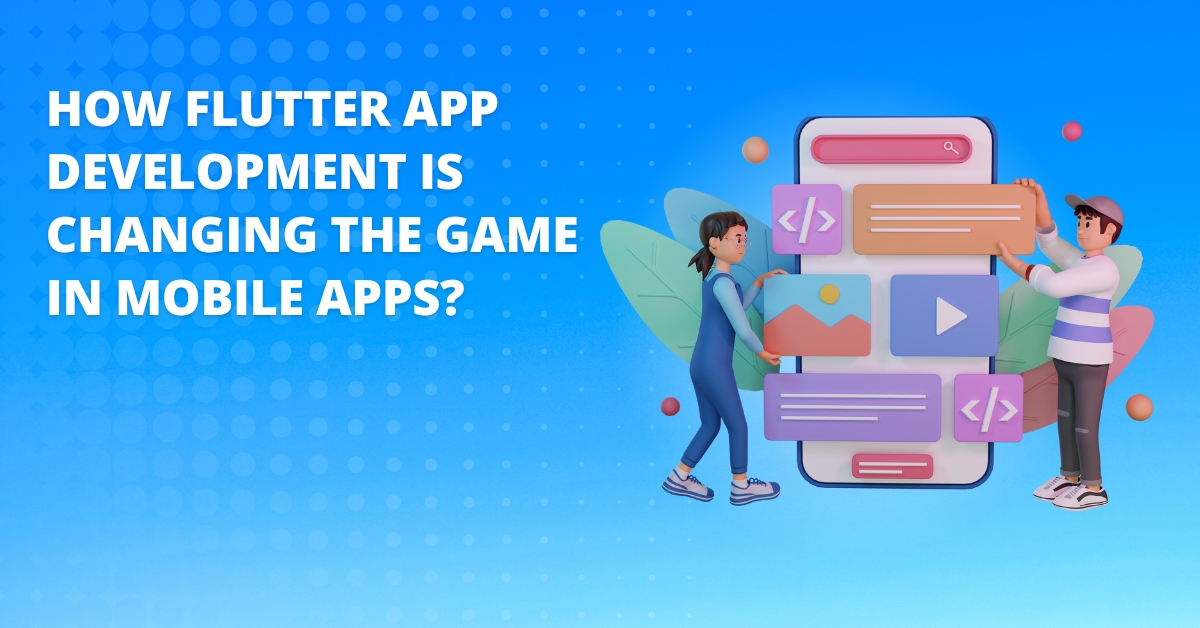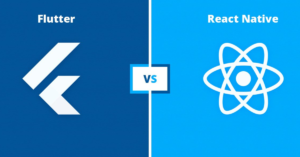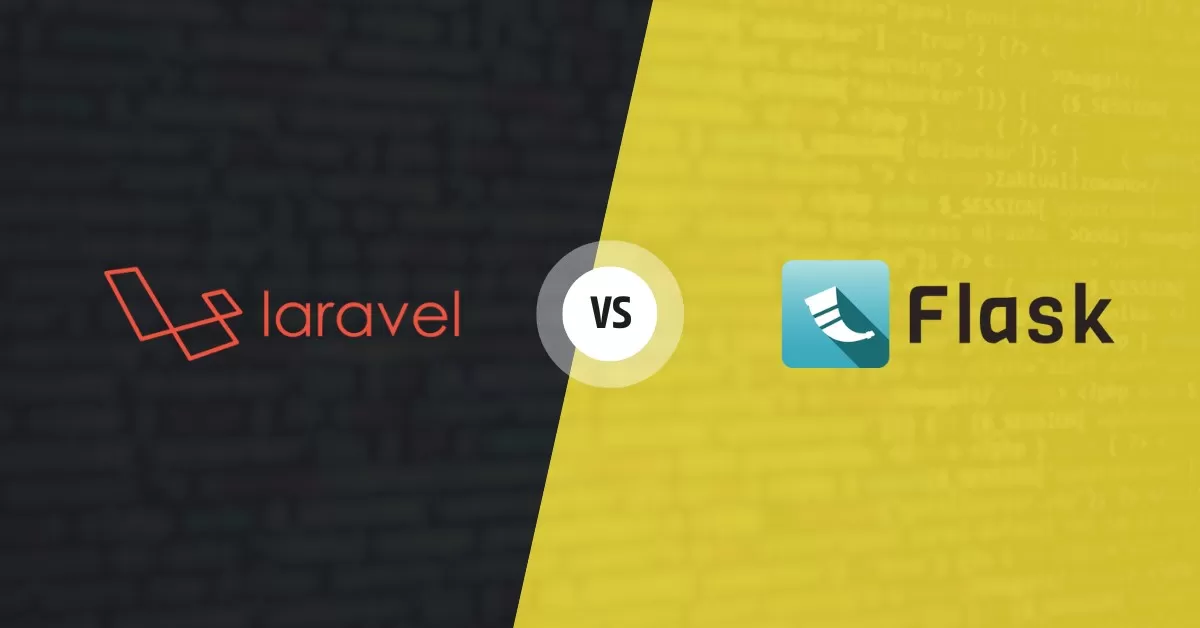How Flutter App Development is Changing the Game in Mobile Apps?

4 min read | By Postpublisher P | 28 March 2023 | Frameworks
In the modern era of technological advancements, developers constantly seek ways to improve existing software and provide a better user experience. This gave rise to Flutter, which is an open-source mobile app that was developed by Google. Flutter succeeds in offering its users a wide widget library, cross-platform capabilities, and much more, which makes flutter app development highly suitable for circular mobile apps.
According to Developer Survey 2022, Flutter has been well placed in mobile app developments, has been gaining popularity among developers, and has surpassed React Native by nearly 4% (React Native – 55.95%, Flutter 68.03%). In this blog, we will be looking over how Flutter has been changing the game in mobile app development.
What Are The Advantages Of Flutter App Development?

Choosing Flutter app development has many advantages over some of its rivals, making it a popular choice. They are:
⒈ 𝐂𝐮𝐬𝐭𝐨𝐦𝐢𝐳𝐚𝐛𝐥𝐞 𝐖𝐢𝐝𝐠𝐞𝐭𝐬: Flutter helps users choose from a massive wide variety of widgets which helps create a visually stunning circular mobile app. Moreover, Flutter also provides users with the ability to customise the widgets that they choose to use. These widgets are posed as building blocks, which allows users to build complex UI designs without worrying about the underlying platform-specific details. Developers can also create a wide variety of circular designs like ring charts, circular photo views, circular navigation items, etc.
⒉ 𝐒𝐞𝐚𝐦𝐥𝐞𝐬𝐬 𝐀𝐧𝐢𝐦𝐚𝐭𝐢𝐨𝐧 𝐚𝐧𝐝 𝐓𝐫𝐚𝐧𝐬𝐢𝐭𝐢𝐨𝐧𝐬: Another huge advantage that Flutter offers is the seamless animations and transitions that the developers can use to create extremely responsive and interactive circular designs. It has inbuilt tools for animation and offers support for motion graphics. This allows the users to have an immersive experience when using the circular mobile app.
⒊ 𝐑𝐢𝐜𝐡 𝐔𝐈 𝐂𝐨𝐧𝐭𝐫𝐨𝐥𝐬: Flutter offers a rich and customizable set of UI controls that can be used mainly to build circular navigation, menus, icon buttons, and sliders with the utmost ease.
⒋ 𝐐𝐮𝐢𝐜𝐤 𝐃𝐞𝐯𝐞𝐥𝐨𝐩𝐦𝐞𝐧𝐭 𝐂𝐲𝐜𝐥𝐞: The development cycle of Flutter is incredibly fast and allows developers to make changes to the code base and see the effects of the app almost instantly. The framework also has a reload feature which lets the developers iterate on designs and test out new ideas with immediate feedback. This ultimately helps in reducing development cycles and getting the app to the market.
⒌ 𝐂𝐫𝐨𝐬𝐬-𝐩𝐥𝐚𝐭𝐟𝐨𝐫𝐦 𝐂𝐚𝐩𝐚𝐛𝐢𝐥𝐢𝐭𝐢𝐞𝐬: Regarding compatibility, Flutter can be used in both IOS and Android, making it easy to create circular mobile apps. As a result, it can work across different devices too. This cross-platform capability of Flutter removed the need for developers that have to write separate code bases for separate platforms, thus saving them time in the long run.
⒍ 𝐎𝐩𝐞𝐧-𝐬𝐨𝐮𝐫𝐜𝐞 𝐚𝐧𝐝 𝐂𝐨𝐦𝐦𝐮𝐧𝐢𝐭𝐲 𝐒𝐞𝐫𝐯𝐢𝐜𝐞: Flutter is open-source, making it easier for developers to download. It also has a large community of developers that share their tools and knowledge. According to Thence, there are over 24 thousand Flutter apps and 11 billion downloads; it’s no wonder that it has gained immense popularity.
What Are Some Of The Apps That Are Built On Flutter?

Many developers have now moved to Flutter and have created some of the finest apps that exist today. They are:
⒈ 𝐆𝐨𝐨𝐠𝐥𝐞 𝐀𝐝𝐬: Flutter apps help marketers to manage their Google ad campaigns directly from their smartphones.
⒉ 𝐆𝐨𝐨𝐠𝐥𝐞 𝐏𝐚𝐲: Flutter is a Google product. It’s no surprise that it was used to build the digital payment app – Google Pay. Keeping in mind that digital payment apps need to be responsive and secure, Google Pay serves as an example of Flutter’s greatest endorsement.
⒊ 𝐀𝐥𝐢𝐛𝐚𝐛𝐚: Alibaba, one of the biggest E-Commerce platforms in the world, was built using Flutter as the cross-platform compatibility feature stood out.
How To Get Started With Flutter App Development?

⒈ 𝐈𝐧𝐬𝐭𝐚𝐥𝐥 𝐅𝐥𝐮𝐭𝐭𝐞𝐫: The first step to getting started is installing Flutter on your laptops. This is available on the official Flutter SDK website. Once the download has been done, the user needs to extract it.
⒉ 𝐈𝐧𝐬𝐭𝐚𝐥𝐥 𝐚𝐧 𝐈𝐃𝐄: Once Flutter has been extracted, the next step is installing an IDE. Android Studio can be an excellent choice, along with Visual Studio Code. Install Flutter Dart plugins for the user’s choice.
⒊ 𝐂𝐫𝐞𝐚𝐭𝐞 𝐚 𝐧𝐞𝐰 𝐏𝐫𝐨𝐣𝐞𝐜𝐭: Once Flutter and an IDE have been installed, the user can create a new Flutter project. Open IDE, select “New Project,” and choose “Flutter” from the available options. Once a name has been given to the project, we move on to the next step.
⒋ 𝐃𝐞𝐬𝐢𝐠𝐧 𝐲𝐨𝐮𝐫 𝐂𝐢𝐫𝐜𝐮𝐥𝐚𝐫 𝐔𝐈: The user can use Flutter’s customizable widgets to create circular UI elements that the app might need. Some popular elements are menu items, photo viewers, and progress bars. The user can also consider using Flutter’s animation tool, which adds dynamic motion and further increases interactivity.
⒌ 𝐓𝐞𝐬𝐭𝐢𝐧𝐠 𝐚𝐧𝐝 𝐃𝐞𝐩𝐥𝐨𝐲𝐦𝐞𝐧𝐭: The last step of this entire process is the testing of the app and making sure it is working as anticipated. You may then deploy it to the target platforms.
As our Flutter app services support Android and iOS, it is much easier for us to create circular mobile apps that work across both platforms.
Flutter vs. React Native: What Are Some Of The Major Differences?

𝐋𝐚𝐧𝐠𝐮𝐚𝐠𝐞:
➥ React Native: React Native’s language is completely written using JavaScript. This is an advantage that it poses for its users as it is one of the most popular languages in the world.
➥ Flutter: The language Flutter uses is called Dart, which Google programmed in 2011. It is relatively new and considered the next most popular programming language due to its gaining popularity.
𝐈𝐧𝐭𝐞𝐫𝐟𝐚𝐜𝐞:
➥ React Native: React Native’s interface is majorly based on the native components of both Android and iOS. It offers a collection of external UI kits that ultimately help create its user interface.
➥ Flutter: Flutter, on the other hand, uses interactive widgets and proprietary visuals to build its interface. These widgets are inbuilt UI components that help replace components that are based on the native platform.
𝐏𝐞𝐫𝐟𝐨𝐫𝐦𝐚𝐧𝐜𝐞:
➥ React Native: The speed of development and the running time of React Native is comparatively slower than Flutter’s as the JavaScript is connected to a bridge via the native components.
➥ Flutter: In the case of Flutter, there is no interconnecting bridge. As a result of this, interactions that Flutter offers with its native components are much faster.
𝐂𝐨𝐦𝐦𝐮𝐧𝐢𝐭𝐲 𝐒𝐮𝐩𝐩𝐨𝐫𝐭:
➥ React Native: React Native was released in 2015 as an open-source platform on GitHub and instantly blew up in popularity. This is backed up by a vast community with over 86.8k followers on Reddit.
➥ Flutter: Flutter is a newer framework and, in comparison, has a smaller community following. But with that in light, it’s also been growing in popularity. Flutter has 487,428 repository results and counting as of February 2023 on GitHub. This beats React Native, whose UI library results are at 355,832.
Flutter App Development: A Conclusion
Flutter provides developers with a space to construct and develop mobile applications without relying on OEM widgets or complicated code with a straightforward and simple option. Flutter gives developers everything they need to create outstanding mobile applications, including a wide variety of customizable widgets and design languages.
Flutter makes it simple for developers to produce excellent mobile applications fast and effectively because of its wide variety of customizable widgets and design languages. Because it gives companies a potent tool to remain ahead of the competition, flutter app development is changing the game.
Understand that Flutter has grown in popularity since its release, and the programming language Dart has also been growing, with many software developers leaning towards it and calling it the programming language of the future.
The latest from our editors
Join over 150,000+ subscribers who get our best digital insights, strategies and tips delivered straight to their inbox.


